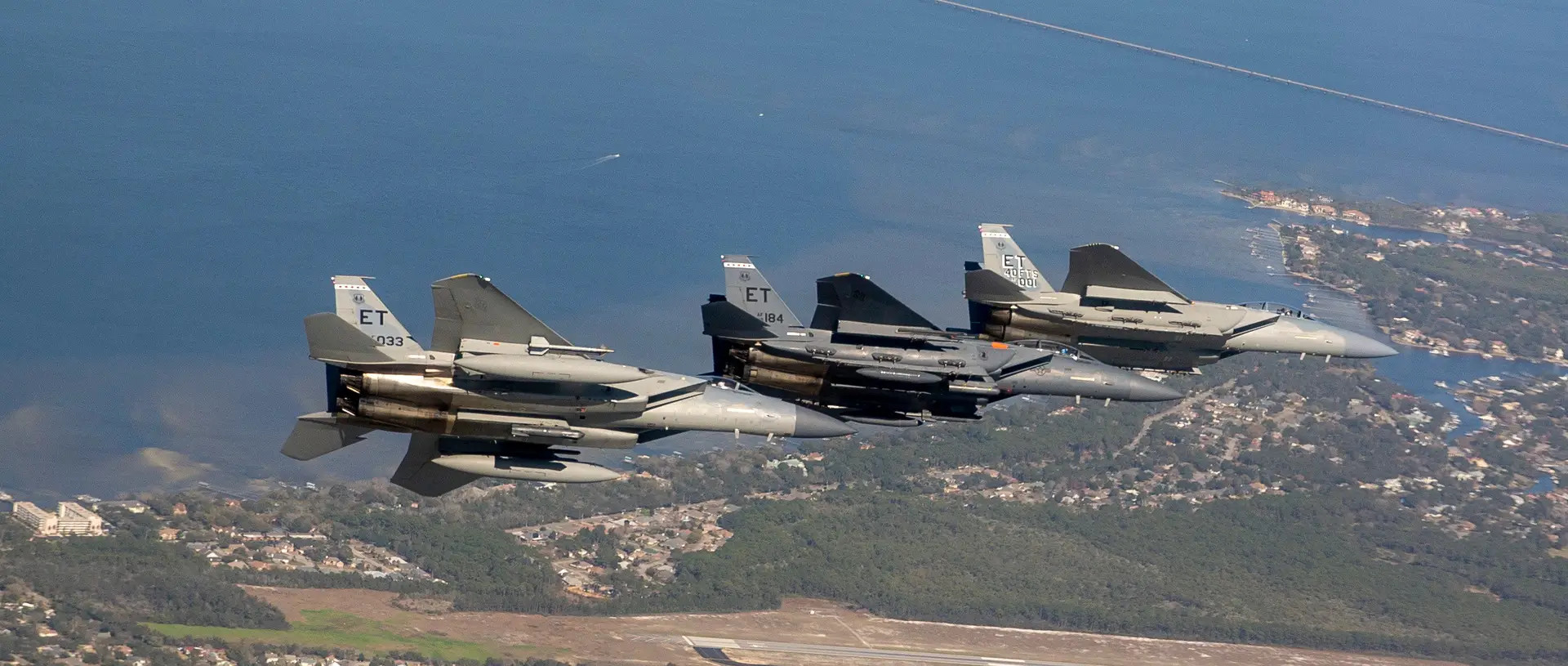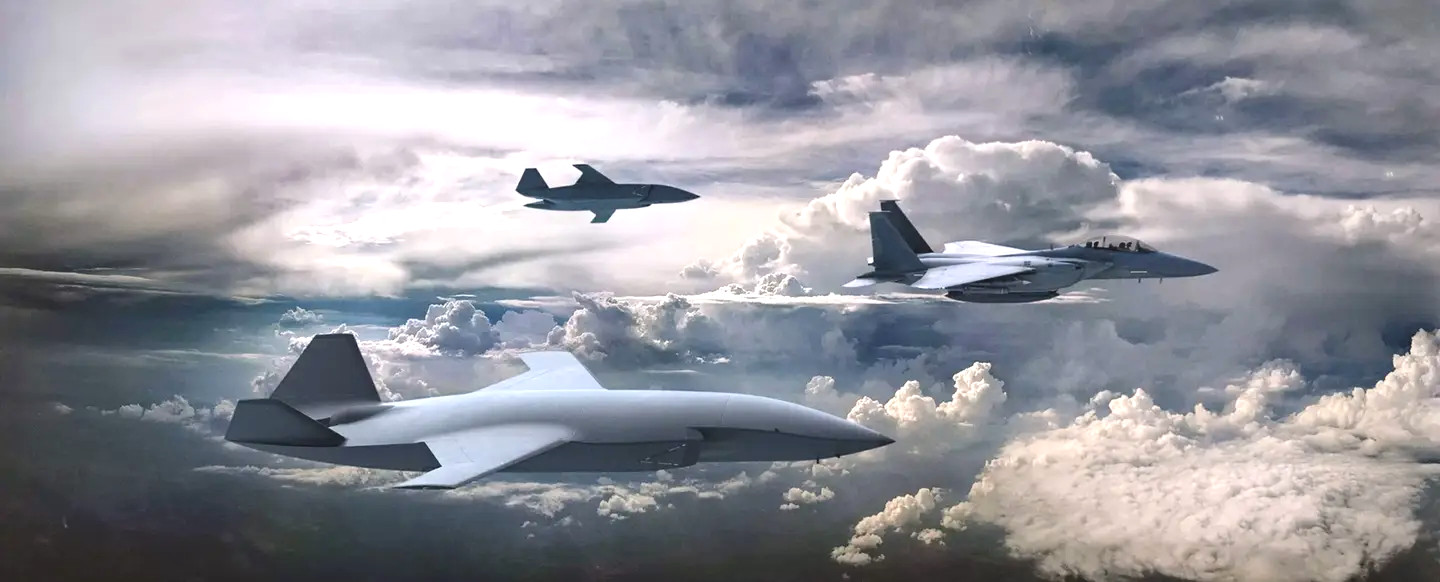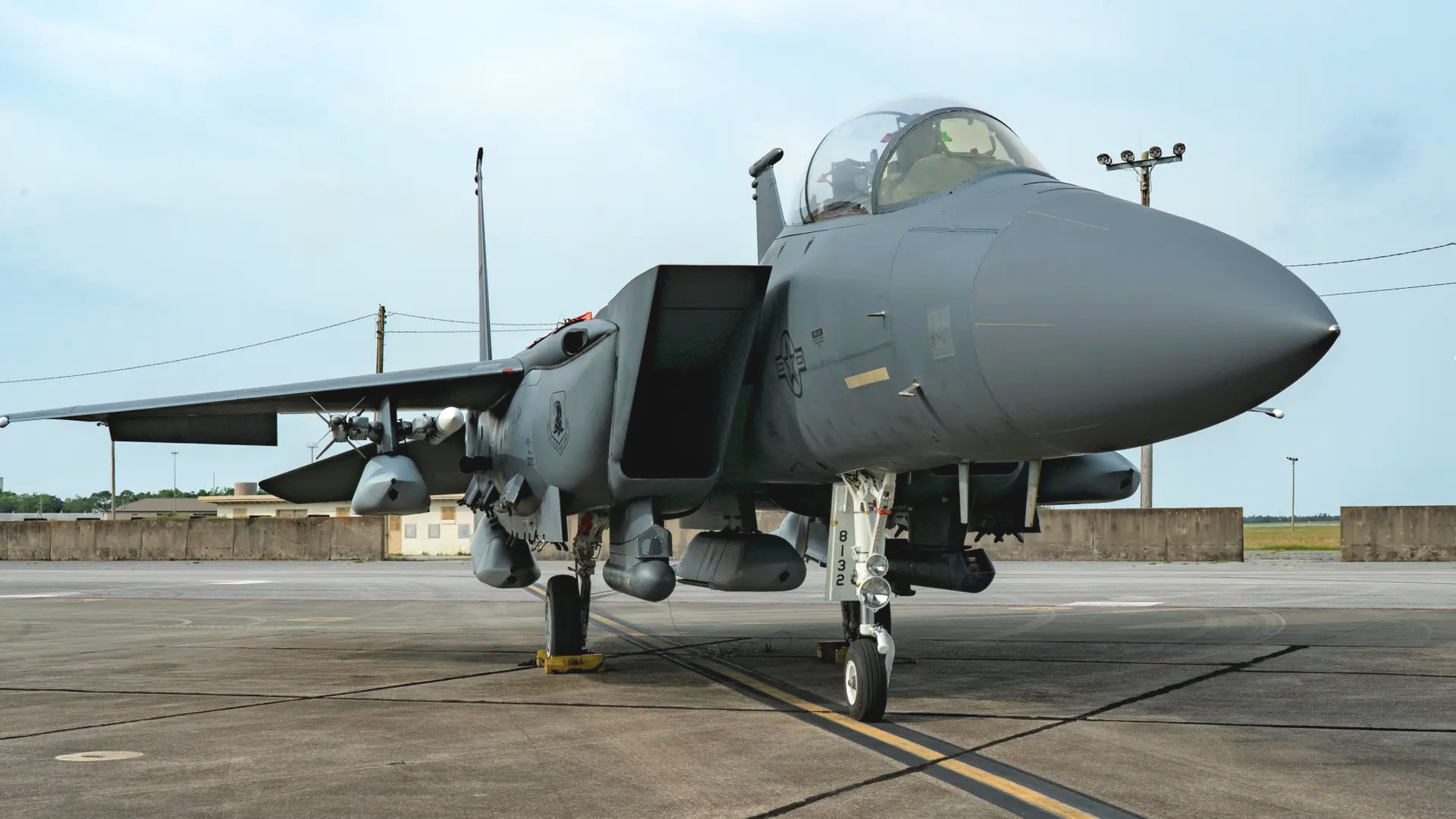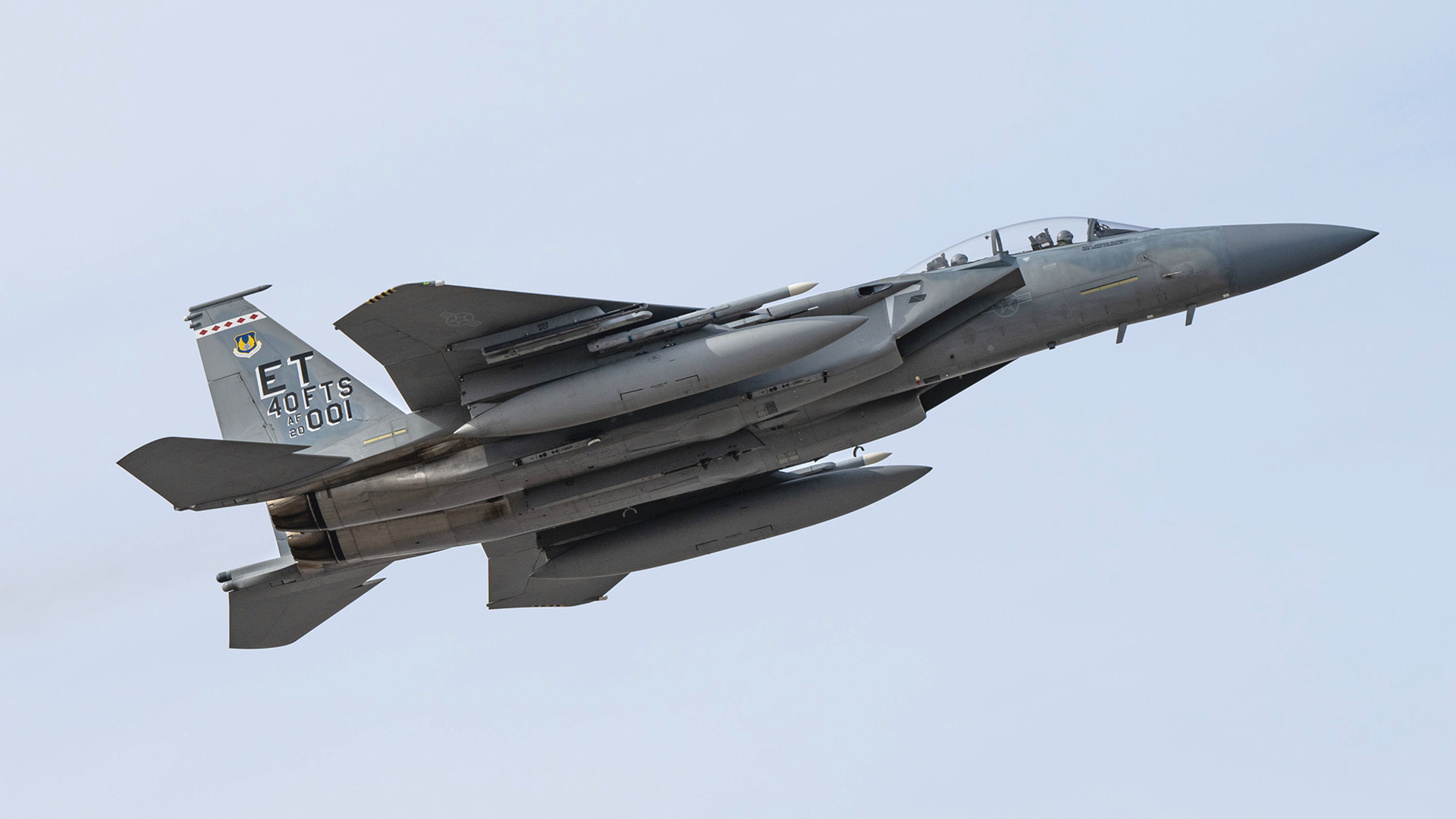The U.S. Air Force has announced that it is looking to cut back its total planned purchases of F-15EX Eagle IIs from 104 to 98 jets as part of the rollout of its proposed Fiscal Year 2025 budget. The expected size of the F-15EX fleet has fluctuated significantly over the years, but a clearer picture of the service’s plans has been steadily coming into focus. This new cut also comes despite senior service officials regularly touting the F-15EX’s capabilities and expressing their desire to have more of these aircraft if possible.
Details about the planned F-15EX cuts first came at a media roundtable that The War Zone and other outlets attended last Friday ahead of today’s rollout of the Fiscal 2025 budget request. In the upcoming fiscal cycle, the Air Force now wants to buy 18 instead of 24 Eagle IIs. The Pentagon’s entire $850 billion proposed budget for the 2025 Fiscal Year is constrained by the provisions of the Fiscal Responsibility Act, or FRA, which Congress passed and President Joe Biden signed into law last year.

The Air Force is also looking to buy fewer F-35As than previously expected in the coming fiscal cycle, but the service says that there is no change to how many Joint Strike Fighters it ultimately plans to acquire in total. The U.S. military is currently not taking delivery of F-35s of any type due to ongoing issues with the Tech Refresh-3 (TR-3) hardware configuration that is necessary to support the Block 4 upgrade package. At the same time, international demand for the F-35 remains strong, so any drop in U.S. purchases could be made up with sales to other countries.
The Air Force plans to continue divesting a variety of other aircraft, including 32 Block 20 F-22 Raptor stealth fighters, which it says is necessary as part of its broader modernization plans.
“The secret of life and budgets is balance,” Secretary of the Air Force Frank Kendall said at the round table last week when asked about cuts to F-15EX and other fleets. “We tried to get the balance as best as we could achieve, and I think we got to what I think is [an] … acceptable balance here.”

Secretary Kendall said that the Air Force’s proposed Fiscal year 2025 budget overall reflected “tough choices” that had to be made in large part due to the FRA. At last week’s roundtable, Kristyn Jones, the sensor official currently performing the duties of Under Secretary of the Air Force also described the new budget request as being the product of “difficult decisions.”
However, for the F-15EX, this new proposed cut is just the latest in what has become something of a saga when it comes to the expected size of the Eagle II fleet. The Air Force originally said it would acquire at least 144 of these aircraft. Then, in 2022, the service announced its intention to trim that acquisition program back to just 80 jets. Last year, the service said it had bumped the number back up somewhat, to 104 aircraft.
Deliveries of F-15EXs already on order have also been substantially delayed, something that has been primarily blamed on manufacturing-related issues, which you can read more about here. As of December 2023, the Air Force had only received four F-15EXs from manufacturer Boeing out of an initial tranche of six jets to be used for testing purposes. The Oregon Air National Guard’s 142nd Wing is set to be the first operational Eagle II unit and the hope is that it will receive its first jets later this year.

A fleet of just 98 F-15EXs is in line with what is otherwise known or has been reported about the Air Force’s plans for the Eagle II to date. The Air Force has publicly announced that three Air National Guard units – Oregon’s 142nd Wing, California’s 144th Fighter Wing, and Louisiana’s 159th Fighter Wing – will each receive a squadron of 18 F-15EXs, or 54 jets in total. Together with the six test jets, this leaves 38 Eagle IIs, roughly two squadrons worth, to be assigned to other units.
Plans for a dedicated F-15EX training unit have been scrapped and Oregon’s 173rd Fighter Wing, which had served as the schoolhouse unit for the F-15C/D Eagle, is now set to help train pilots to fly the F-35A instead. The F-15EX’s training pipeline will be blended together with the existing one for the F-15E Strike Eagle. There have been no indications one way or the other that any F-15EXs will be set aside specifically for training. As The War Zone has noted in the past, conversion training on F-15EX after initial training on F-15E could potentially be done at the squadron.

In December 2023, Nikkei Asia reported that the Air Force was planning to forward-deploy 36 F-15EXs at Japan’s Kadena Air Base on the island of Okinawa. This is something that has been widely discussed and would permanently fill the gap left by the shuttering of two F-15C/D Eagle squadrons at Kadena. Rotational deployments of multiple types of fighters, including F-35s and F-22s, have been providing additional fighter capacity at Kadena in the interim.
At the same time, The War Zone has, on multiple occasions, highlighted questions about whether the Air Force will truly be able to get the most out of its future F-15EX fleet even before the announcement of the new planned cut. The two-seat Eagle II, the newest member of the F-15 family and the most advanced F-15 variant to ever enter production, has features that would make it well-suited to a variety of different missions. This includes acting as an airborne controller for future drones, including those the Air Force is looking to acquire through its Collaborative Combat Aircraft program, as well as serving as platforms for launching hypersonic weapons and other large munitions and providing new advanced electronic warfare capabilities.

“So the F-15EX initial fielding is to the National Guard … It is both a homeland defense platform, as well as a power projection platform,” Air Force Lt. Gen. Michael A. Loh, the director of the Air National Guard, said in direct response to questions from The War Zone‘s Howard Altman on the sidelines of this year’s Air & Space Forces Association’s Warfare Symposium. “We have a capacity and a capability need out there. And so to get more and more fighter units recapitalized into the newer equipment, I would love to have more EXs.”
However, at present, the bulk of the Eagle II fleet is expected to be primarily tasked with counter-air missions in defense of the U.S. homeland, especially in any future major conflict, such as one against China. In that same context, a force of between 36 and 38 jets at Kadena would face constraints in the diversity of missions they could perform and over how broad an area of the Pacific. You can read more about the issues facing the Air Force’s future F-15EX fleet in greater detail in this past War Zone feature.
All of this also comes as the Air Force has been looking to cut its fleet of older F-15E Strike Eagles by more than half, from 218 jets down to 119, despite those aircraft having long been and continuing to be in very high demand. The cut would be specifically of the less powerful P&W F100-PW-220 engines-equipped F-15Es.

There is still the possibility that Congress could intercede and block the Air Force’s new proposed cuts to the F-15EX fleet. Members of the House of Representatives had sought to compel the service to increase Eagle II purchases from 104 to 110 as part of the annual policy bill, or National Defense Authorization Act, for the 2024 Fiscal Year. Those provisions were subsequently dropped, but legislators do have a history of blocking proposed cuts to aircraft fleets and other programs.
There is always the potential for the Air Force to change course in the future and there is clear foreign interest in the F-15EX, too. Last year, Indonesia made a formal commitment to buy 24 F-15IND jets derived from the EX. Poland has emerged as another potential export customer.
Still, the cuts the Air Force now wants to make to the F-15EX do look to align with its overall plans for the Eagle II fleet, even if questions remain about whether this will allow the service to make the most out of these jets.
Contact the author: joe@twz.com
